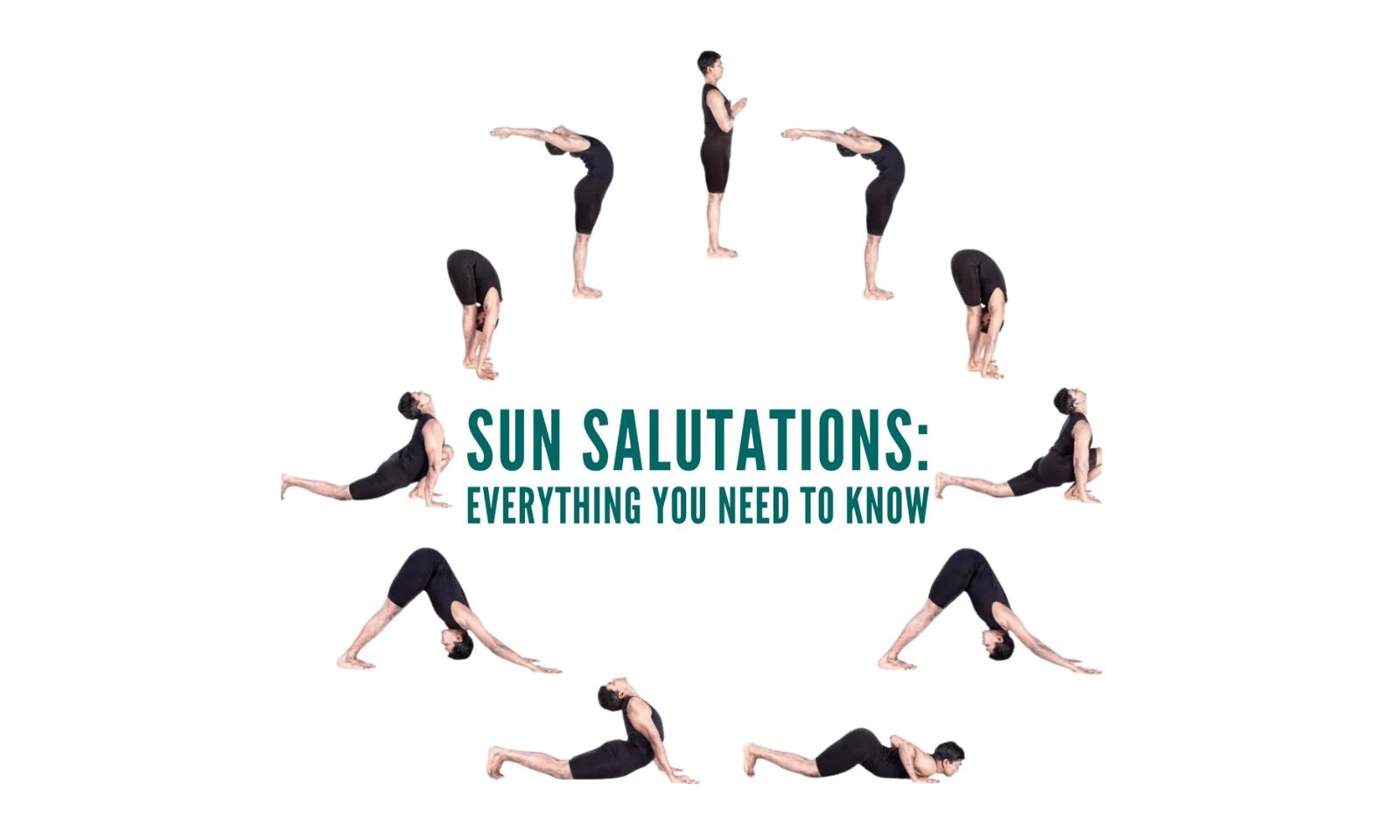
Sun Salutation, or Surya Namaskar, is one of the most iconic and revered practices in the world of yoga. Rooted in ancient traditions, this sequence of poses is designed to honor the sun, the source of all life and energy on Earth. Whether you’re a beginner or an advanced practitioner, the Sun Salutation offers countless benefits for the mind, body, and spirit. In this comprehensive blog post, we will explore the history, significance, benefits, variations, and tips for mastering the Sun Salutation.
The Origins of Sun Salutation
The Sun Salutation has its roots in Indian culture and yoga philosophy. “Surya” refers to the sun, which has been worshipped in India for millennia as a symbol of health, energy, and vitality. “Namaskar” means to bow or offer respect. Together, Surya Namaskar is a devotional practice that combines movement, breath, and mindfulness.
The origins of Surya Namaskar can be traced back to Vedic rituals, where ancient sages chanted hymns and performed prostrations to honor the sun. Over time, these practices evolved into the structured sequence of poses we know today. The sequence became widely popularized in the 20th century, particularly through the efforts of yoga pioneers like Krishnamacharya and Swami Sivananda.
The Philosophy Behind Sun Salutation
In yoga philosophy, the sun represents the soul (Atman) and the source of cosmic energy (Prana). Practicing Sun Salutation is not just a physical exercise but a spiritual offering. It is a way to connect with the universe and express gratitude for the life-giving energy of the sun.
Each movement in the sequence corresponds to one of the 12 mantras dedicated to the sun, making the practice a form of moving meditation. This holistic approach integrates the physical, mental, and spiritual aspects of yoga.
The Basic Structure of Sun Salutation
A traditional Sun Salutation consists of a series of 12 postures performed in a flowing sequence. Each posture is synchronized with the breath, creating a dynamic and meditative rhythm.
Here’s a breakdown of the 12 poses:
Pranamasana (Prayer Pose): Stand at the front of your mat with your palms together in front of your chest. This is a gesture of gratitude and intention-setting.
Inhale/Exhale: Breathe naturally.
Hastauttanasana (Raised Arms Pose): Raise your arms overhead, arching your back slightly.
Inhale: Expand your chest and lengthen your spine.
Ashtanga Namaskara (Eight-Limbed Pose): Lower your knees, chest, and chin to the floor, keeping your hips raised.
Exhale: Ground yourself in humility.
Adho Mukha Svanasana (Downward-Facing Dog Pose): Lift your hips to form an inverted “V.”
Exhale: Stretch your back and hamstrings.
Padahastasana (Standing Forward Bend): Bring your left foot forward, mirroring pose 3.
Exhale: Relax and surrender.
Pranamasana (Prayer Pose): Return to the starting position with palms together.
Exhale: Feel centered and at peace.
Benefits of Sun Salutation
Sun Salutation offers a wide range of benefits, making it a cornerstone of yoga practice. Here’s what you can expect:
Physical Benefits of Sun Salutations
Improved Flexibility: The sequence stretches all major muscle groups, enhancing flexibility over time.
Strengthened Muscles: It builds strength in the arms, shoulders, core, and legs.
Cardiovascular Fitness: Practicing multiple rounds of Sun Salutation increases your heart rate, providing an excellent cardio workout.
Detoxification: The dynamic movements stimulate blood circulation and promote the removal of toxins.
Weight Management: Regular practice can help tone your body and manage weight effectively.
Mental and Emotional Benefits
Reduced Stress: The synchronization of breath and movement calms the nervous system.
Enhanced Focus: The meditative nature of the practice sharpens concentration and mental clarity.
Mood Boost: Deep breathing and physical activity release endorphins, lifting your mood.
Spiritual Benefits
Connection to Nature: Surya Namaskar fosters a sense of gratitude and unity with the universe.
Mindfulness: Each pose is an opportunity to be fully present and aware.
Inner Peace: The practice balances energy flow and creates a sense of harmony within.
Variations of Sun Salutation
While the traditional Sun Salutation is widely practiced, there are several variations to suit different needs and levels of expertise:
Sun Salutation A (Surya Namaskar A):
This simplified version is common in Ashtanga and Vinyasa yoga. It includes fewer steps and is ideal for beginners.
Sun Salutation B (Surya Namaskar B):
A more advanced variation that incorporates poses like Utkatasana (Chair Pose) and Warrior I. It provides a more intense workout
Chandra Namaskar (Moon Salutation):
This variation is practiced in the evening and includes poses that emphasize calmness and introspection.
Classical Sun Salutation:
The traditional 12-pose sequence, often performed with mantras and devotion.
Dynamic Sun Salutation:
A faster-paced version designed for a high-intensity workout.
How to Practice Sun Salutation
Prepare Your Space:
Find a quiet, clean area to practice.
Use a yoga mat for comfort and support.
Choose the Right Time: Early morning is ideal, as it aligns with the rising Sun. Practice on an empty stomach for optimal energy flow.
Start Slow: Begin with 3-5 rounds and gradually increase as your stamina improves. Focus on mastering each pose with proper alignment
Incorporate Breathing: Synchronize your breath with each movement.
Maintain a steady and rhythmic flow.
Practice Gratitude: Dedicate your practice to the sun or a higher purpose. Cultivate a sense of reverence and mindfulness.
Common Mistakes and How to Avoid Them
Rushing Through the Sequence.
Solution: Slow down and focus on each pose.
Incorrect Alignment
Solution: Work with a teacher or use mirrors to ensure proper form.
Holding the Breath
Solution: Prioritize synchronized breathing over speed.
Neglecting Warm-Up
Solution: Perform gentle stretches before starting. Sun Salutation as a Daily Practice
Incorporating Sun Salutation into your daily routine can transform your physical and mental well-being.
Here’s a simple plan:
Morning: Start your day with 6-12 rounds to awaken your body and mind.
Afternoon: Use it as a quick energy boost during work breaks.
Evening: Practice a slower, more meditative version to unwind and relax.
Advanced Practices
For seasoned practitioners, Sun Salutation can be enhanced with additional elements:
Mantras: Chanting the 12 Surya mantras during each pose deepens the spiritual experience.
Variations: Experiment with advanced poses like Crow Pose or Side Plank within the sequence.
Meditative Flow: Practice with eyes closed, focusing solely on breath and movement.
Scientific Backing: Modern research supports the numerous benefits of Sun Salutation:
A 2011 study published in the International Journal of Yoga found that practicing Sun Salutation improves cardiovascular health and reduces BMI. Another study in Yoga & Physical Therapy highlighted its role in reducing stress and anxiety
Conclusion
Sun Salutation is more than just a series of yoga poses; it is a holistic practice that nourishes the body, mind, and spirit. By incorporating this ancient tradition into your daily routine, you can cultivate strength, flexibility, and inner peace while honoring the life-giving energy of the sun.
Whether you are a novice or a seasoned yogi, Surya Namaskar offers something for everyone. Start your journey today and experience the transformative power of this timeless practice.




Comment 01
LloydViodo,
06 June, 2025Нужно найти информацию о пользователе? Этот бот поможет детальный отчет в режиме реального времени .
Используйте уникальные алгоритмы для поиска цифровых следов в соцсетях .
Выясните место работы или активность через автоматизированный скан с гарантией точности .
глаз бога сайт
Система функционирует в рамках закона , обрабатывая общедоступную информацию.
Закажите детализированную выжимку с геолокационными метками и графиками активности .
Попробуйте надежному помощнику для исследований — результаты вас удивят !